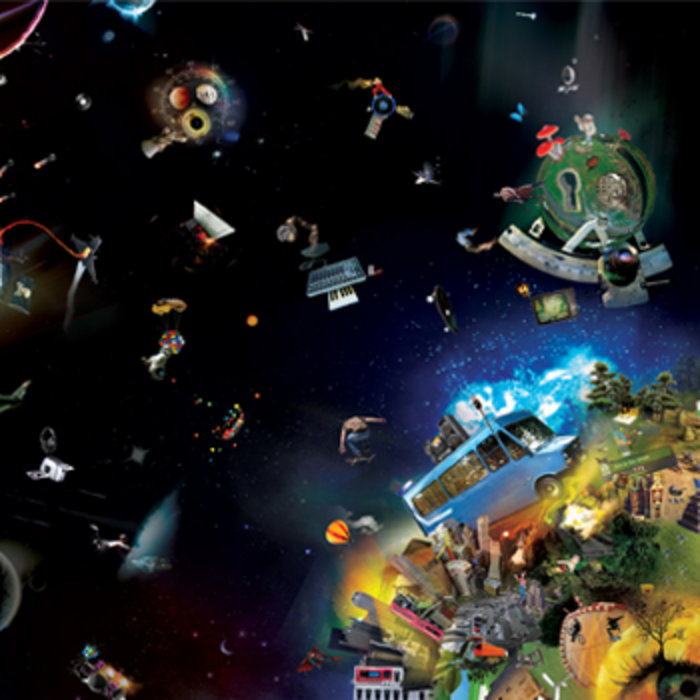
Love Someone – Dub FX
this blog is GROOVY – check out great Soul, Funk, Jazz, Hip Hop, Bass, Breaks , Reggae, House n many more TUNES
When we think about music, what usually comes to mind are melodies, harmonies, and rhythms that flow effortlessly from one moment to the next. But let’s take a detour down a groovier path — the world of looping! This innovative technique has transformed how artists create and perform music. Let’s jam through its history, highlight some funky facts about musicians who embraced looping, and celebrate this rhythmic revolution.
At its core, looping involves repeating a section of sound or music. It’s like pressing “repeat” on your favorite song but adding your own sweet twist! Typically associated with electronic music today, it has roots as deep as jazz improvisation.
Long before digital technology took over our playlists, musicians were crafting loops using magnetic tape. In the 1940s and 50s, avant-garde composers like John Cage began experimenting with tape recorders. They would cut pieces of tape together to create repeated sections of sound — essentially early forms of looping!
But wait! It gets funkier…
Fast forward to the late 1960s when rock ’n’ roll was electrifying dance floors everywhere. Musicians like The Beatles played around with loops on tracks such as “Tomorrow Never Knows,” utilizing backmasking techniques that laid groundwork for future loop-based compositions.
And then there was Robert Moog, whose synthesizers opened new doors for sonic manipulation! He joined forces with psychedelic bands during the height of flower power—talk about vibin’ out!
By the late ‘70s into the ‘80s, live looping started gaining traction thanks to artists like Brian Eno who introduced ambient textures into his works through layering sounds in real-time—a move that made him an early adopter in modern electronic performance!
In those same grooves came artists using pedals for their guitars; suddenly you could play along with yourself! Guitar legends such as Kurt Cobain, utilizing looped riffs during Nirvana performances (you know you’ve tried singing “Smells Like Teen Spirit” repeatedly).
As computers rocked onto center stage in music production during the ‘90s and early 2000s—the scene shifted again dramatically. Enter samplers: machines capable not just altering but storing entire songs or instrumental breaks ready for instant playback… hello creativity explosion!
Artists plucked samples from old school records while incorporating live instruments into their sets—mix tapes never sounded so good! Weirdly cool fact? Most DJs spend hours digging through crates at thrift shops just hunting down those hidden gems—who said being broke doesn’t pay off?
Looping isn’t limited by genre—it transcends boundaries like funky spirit animals bouncing between styles:
Artists across genres are getting their groove on: look at Ed Sheeran, who became famous for building layers live on stage using his trusty loop pedal.
Even classical violinist Lindsey Stirling moved beyond traditional realms by integrating EDM beats into her performances while layering violin parts—how neat is that?!
Let’s not forget beatbox veterans too; they pull off synchronized vocal gymnastics rivaled only by Olympic athletes performing acrobatics—all without instruments involved.
What better way than sharing stories filled with laughter? Did anyone mention famous flubs when trying out new tech?
Repetitive Band Names: While there’s no consequence directly tied here (not yet), can we talk about how many bands have included “loop” somewhere in their name? There’s even “Loop Station”—okay we see what you guys did there.
When legendary guitarist Jimmy Page first experimented with live looping effects due to technical issues at concerts—it led fans laughing uncontrollably each time he had false starts… little did they realize it birthed one-of-a-kind solos!
Legendary looper magician Derek Trucks, known mostly for slide guitar wizardry once tried integrating beats via cassette player leading fresh chills throughout festivals but ended up jamming alongside confused attendees thinking it was part-and-parcel showmanship gone wrong!
And remember that iconic scene from “Pulp Fiction”? Well folks are still debating if Samuel L Jackson should’ve just carried around a boombox creating epic layered dialogue moments instead…perhaps Quentin Tarantino would’ve appreciated more organically formed storytelling sessions instead?
Edward Sharpe told us once he’d love diving back into old-school VHS loops (you guessed it folks!) where all mistakes became opportunities defining movements!* Let me hear ya say ‘what!’ now…
Lastly do people forget how odd looking recording setups may appear?! Just ask any professional musician featuring multiple pedals tangled among wires; it’s basically this incredible art piece begging someone artistic enough not merely document messiness thereof…
So there you have it—the colorful history behind looping—from innovative pioneers juggling tapes to contemporary maestros seamlessly blending genres onstage today—we’ve seen how far we’ve come together united under rhythmic brilliance buzzing along our collective consciousness throughout generations past present future ahead alike!.
Next time you’re lost in thought listening away remember every note dances along might be someone’s epic repetitious creation bridging connecting souls worldwide covered head-to-toe disco ball dreams hummed memories treasures waiting inside spontaneous moments burst free formality unfolding magic latent always waiting perhaps right outside tiptoeing awaiting magic calling forth joyous hearts alike activating blissful minds living loud unafraid sharing generously humanity flourishing endlessly via simple prompting repeated joyously easily mixing vibes summoning wondrous open skies above painting life you’ve longed sought eternally grooving onward clasp hands united bold dreaming vivid beloved life divine simply musical adventure awaits rhythmically dancing bright brand-new tomorrow smiling warmly touching hearts forevermore…
Keep those grooves alive ! 🎶✨

Love Someone – Dub FX